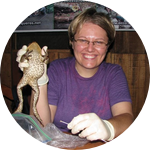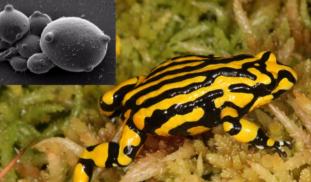Please wait...
About This Project
As a result of the arrival of the chytrid fungus in Australia, corroboree frog populations declined so now only a handful of individuals remain in the wild. Since the fungus cannot be eradicated, the immunity of frogs needs to be increased to enable survival and produce self–sustaining populations. We will work with captive breeding programs to identify immune genes associated with disease resistance, so frogs can be selectively bred to increase survival.






